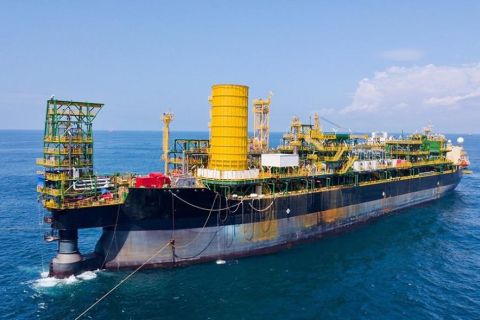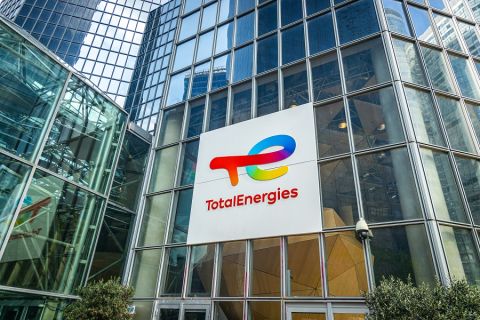
(Source: Shutterstock.com)
Emissions management is emerging as a new ‘Big E’ for E&P. Profitability, historically dominated by the ability to find and exploit new resources, is beginning to be influenced by emissions management strategies and the capacity to capture low-carbon investment opportunities. And the shift is accelerating.
Profitability is impacted on three fronts: directly through changes to core operations; indirectly through the administrative burden of navigating a more emissions-aware world; and through the social license to operate as an E&P business.
Most obvious are the direct costs that impact profitability. Carbon taxes, acquiring carbon credits to meet net-zero commitments and the planned methane tax introduced in President Joe Biden’s Inflation Reduction Act (IRA) all add direct costs associated with voluntary and mandatory moves to reduce emissions.
Less obvious are the operational changes imposed by greater public scrutiny. Satellites have made flaring, once an acceptable externality of oil extraction, an easily observable black eye. Operators have responded with strategies ranging from reinjection, to gathering and marketing associated gas, to reduced flaring during flowback and workover operations. As a result, flared volumes fell by more than 50% from 2019 to 2021. Based on satellite-derived data, emissions last year are estimated to have fallen an additional 30% to 14.8 mt CO2e.
The allure of direct profits from new business models like carbon capture and storage are also changing the nature of the modern E&P. Why not build a business around reducing emissions? 425 mt of North American sequestration projects have already been proposed, a 170-fold increase in currently operating capacity in North America. When combined with the incentives from the IRA, IRRs for the best projects exceed 100%, according to our calculations.
Renewable natural gas (RNG) projects also made headlines with majors like BP and Shell respectively acquiring Archaea Energy and Nature Energy for a combined $6.1 billion. Typically designed to capture methane emissions from agriculture and landfills, project IRRs can exceed 100% if you can construct the right combination of source and market to capture the credits that can drive over 95% of project revenues.
An emissions-aware world also imposes an administrative burden on organizations. New departments dedicated to collecting, managing and reporting emissions performance are now the norm. Critical to initiatives driving direct profitability, these teams are also necessary to meeting rising regulatory requirements and addressing public scrutiny.
Looming on the horizon are proposed rules from the Securities and Exchange Commission for emissions reporting. This raises the stakes for reporting entities – not only would emissions performance (Scope 1, 2 and potentially 3) be required alongside financial results, but climate-related risks and plans for progress could also be required. These proposals imply reporting both the primary production product of the business, hydrocarbons for an E&P and the production of the associated emissions with similar emphasis.
The direct imposition of costs, the policy incentives to support new business models and the regulatory requirements that ratchet up disclosure and scrutiny are a consequence of stakeholder discontent and changing terms of the industry’s social license to operate.
Industry has responded. 73% of the 56 operators we run through our detailed ESG algorithm now have greenhouse gas reduction targets, a 20% increase from a year prior. The impact on emissions has been significant. Industry’s emissions reduction of 28% between 2019 and 2021 fell by 28%, or 34 mt CO2e, which is equivalent to swapping 7.7 million gasoline-powered vehicles to electric vehicles. This is nearly three times the amount of electric vehicles currently on the road in the country.
What has been created is an ecosystem of scrutiny, accountability and opportunity around emissions management. Scrutiny driven by interest from external (financial and non-financial) stakeholders and supported by required reporting and data availability. Accountability enabled by imposed costs (like methane taxes) and independent verification tools like satellite observation. Opportunities created by large financial incentives and new business models designed to profit from an emissions-aware world.
In this ecosystem, hydrocarbon production will remain a cornerstone of most operators, but emissions management is set to take a bigger role in determining the profitability and success of the business. The energy company of the future must be as much a manager of emissions as a producer of energy.
Ian Nieboer is managing director and head of energy transition research at Enverus.
Recommended Reading
US Gas Rig Count Falls to Lowest Since January 2022
2024-03-22 - The combined oil and gas rig count, an early indicator of future output, fell by five to 624 in the week to March 22.
Chevron Hunts Upside for Oil Recovery, D&C Savings with Permian Pilots
2024-02-06 - New techniques and technologies being piloted by Chevron in the Permian Basin are improving drilling and completed cycle times. Executives at the California-based major hope to eventually improve overall resource recovery from its shale portfolio.
Eni Finds 2nd Largest Discovery Offshore Côte d’Ivoire
2024-03-08 - Deepwater Calao Field’s potential resources are estimated at between 1 Bboe and 1.5 Bboe.
Cronos Appraisal Confirms Discovery Offshore Cyprus
2024-02-15 - Eni-operated block partner TotalEnergies says appraisal confirms the presence of significant resources and production potential in the block.
Texas Earthquake Could Further Restrict Oil Companies' Saltwater Disposal Options
2024-04-12 - The quake was the largest yet in the Stanton Seismic Response Area in the Permian Basin, where regulators were already monitoring seismic activity linked to disposal of saltwater, a natural byproduct of oil and gas production.



